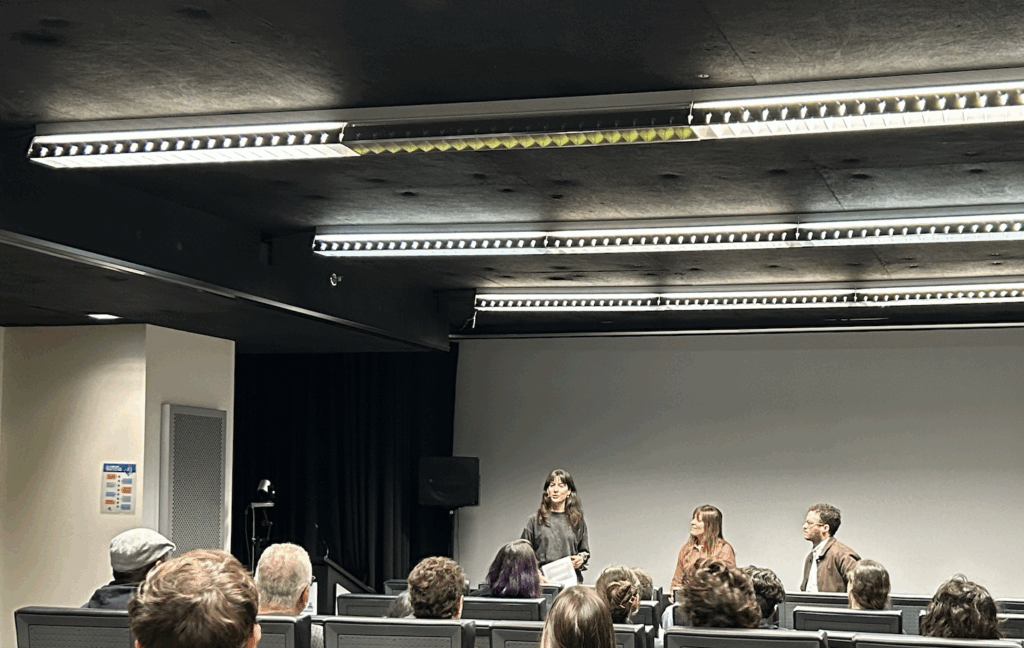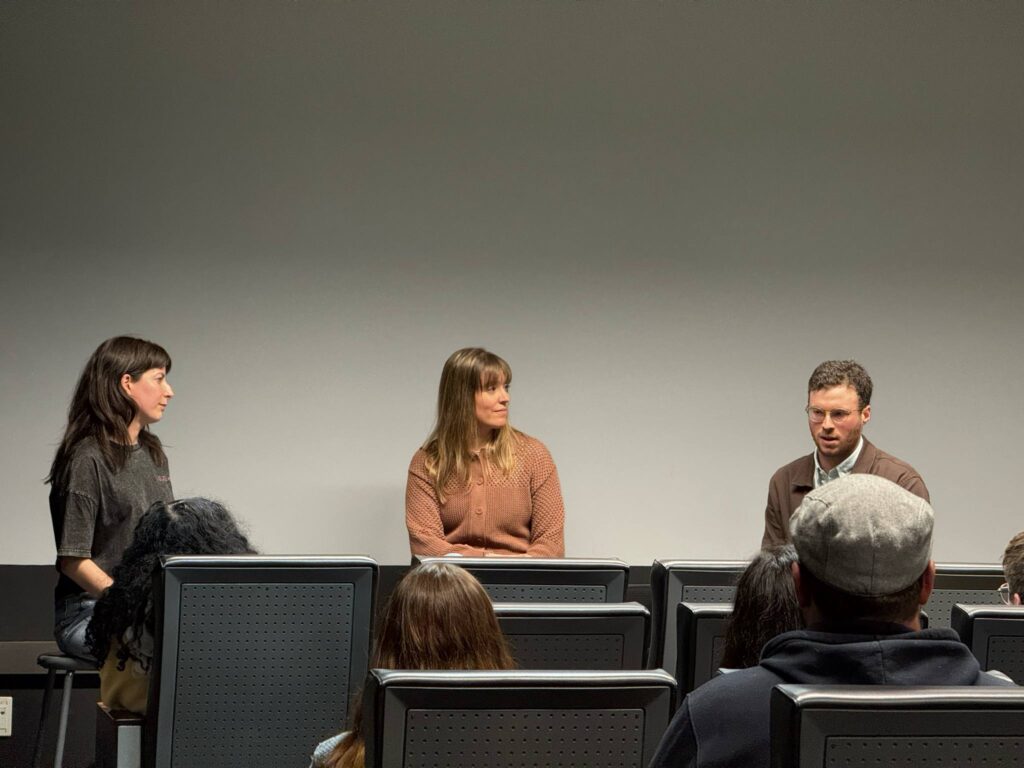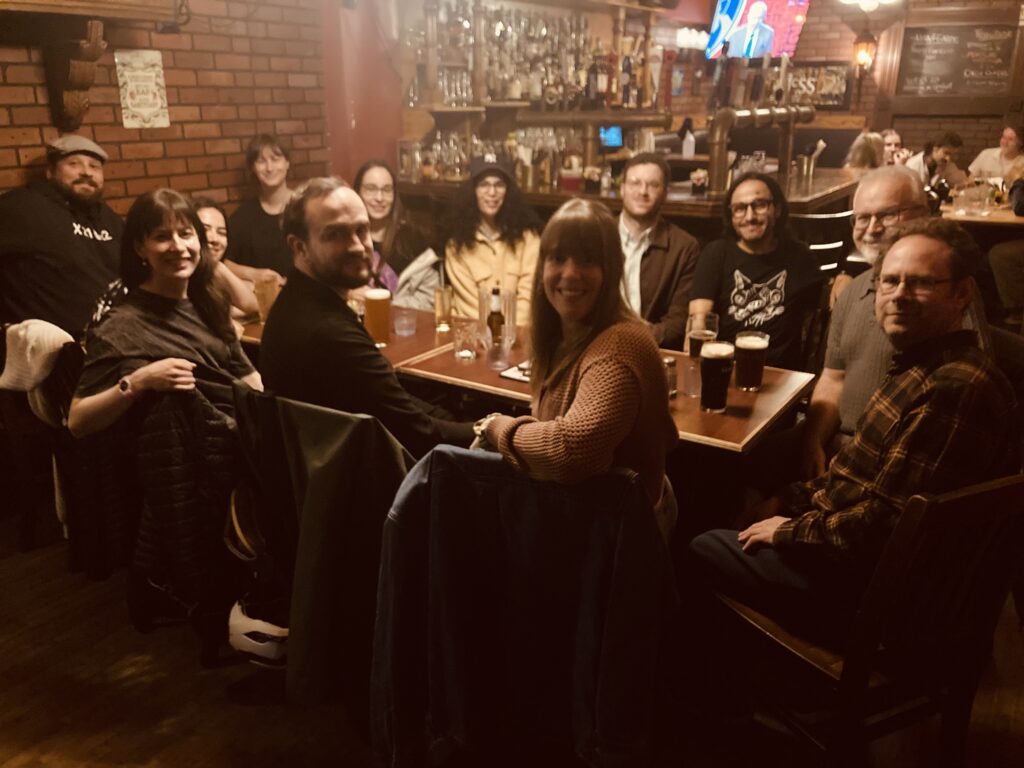Stuttering on Screen

On May 21, 2025, at the Carrefour des arts et des sciences at Université de Montréal, Stuttering on Screen took place, an evening of film excerpts and conversation exploring the representation of stuttering in cinema, including a panel with Judith Labonté, a speech-language therapist, and Renaud Ouimet, a person who stutters and a filmmaker. The event was part of the Voice and Media program, which creates spaces for collective reflection on voices marginalized by communicative differences in the media.
This was the second public event in the series, following an initial evening of collective creation around Cadavre exquis, a screening-lecture cycle designed by Professor André Habib, focused on the Université de Montréal’s 16mm film collections.
Three film excerpts were presented to spark discussion. Each was selected to illustrate contrasting ways of representing stuttering on screen, drawing on the typologies developed by Clogston (2010) and Haller (1999).
- In My Cousin Vinny (J. Lynn, 1992), stuttering is used as a comedic device in a courtroom scene. This portrayal aligns with what the authors define as traditional representations, where disability, in this case, disfluency, is often reduced to a weakness, a barrier, or a source of ridicule.
- Confessions (L. Picard, 2022) offers a more nuanced approach, aligned with progressive models. Inspired by true events, the film features a main character who stutters, without attempting to explain or justify the disfluency. Actor and director Luc Picard studied interrogation footage to accurately reproduce the speech pattern. Here, stuttering is portrayed as part of the character’s identity, without being the focal point of the narrative.
- Finally, Le Bon souffle (R. Ouimet, 2022) offers a form of self-representation. Directed by a person who stutters, this short fiction film presents a sensory and embodied portrayal of the experience. Although the main actor does not stutter, he was coached by the director to represent disfluent speech in a respectful and credible way. Many audience members shared how deeply the film allowed them to “feel what stuttering is like from the inside.”
Each clip was contextualized by Geneviève Lamoureux, a speech-language therapy PhD candidate and person who stutters, who also moderated the post-screening panel. Filmmaker Renaud Ouimet generously shared insights into his creative process and thoughts on self-representation, while Judith Labonté offered complementary reflections on the therapeutic potential of media portrayals.
The audience was engaged and thoughtful, particularly moved by Le Bon souffle, which raised questions about identification, the complexity of representation, and the lasting impact of certain images. The conversation continued in a friendly atmosphere over a drink at a pleasant pub near the university.
We don’t have clear audience photos from the evening, but thank you so much to everyone who attended, for your listening, curiosity, and deep reflections. These spaces are rare, and their richness depends on the people who inhabit them.
📽️ Watch Le Bon souffle: https://www.tv5unis.ca/le-bon-souffle



Réf. : Clogston, J. S. (1990). Disability Coverage in 16 Newspapers. Louisville: Advocado Press.
Haller, B. (1999). “How the News Frames Disability: Print Media Coverage of the Americans with Disabilities Act.” Research in Social Science and Disability. JAI Press, Vol. 1.

